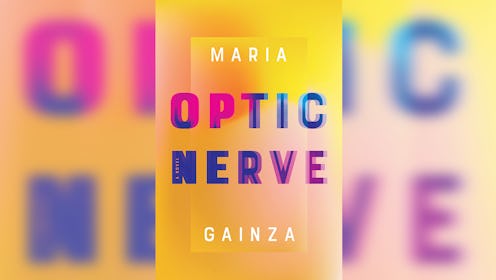
There is a line in María Gainza's Optic Nerve that perfectly describes how I felt after reading it. The narrator is not talking about a book, but about a work of art, The Stormy Sea, painted by Gustave Courbet: "Every time I look at it, something inside me becomes compressed, a sensation between my chest and my throat, like a small bite being taken out of me," she says. "I have learned to respect this twinge, to pay attention to it, because my body always works things out before I do. Only afterward does my intellect draw its conclusions."
Translated into English by Thomas Bunstead (and originally published in Spanish in 2014), Optic Nerve is the first novel by Argentine writer María Gainza. Its narrator, also named María is an art critic, and the entire novel is told through her voice, in vignettes that juxtapose the stories and work of famous artists — Courbet, Mark Rothko, Henri de Toulouse-Lautrec, and others — with tales of her life and the lives of those around her.
Though María emphasizes the power of instinct in judging art, she is also delightfully skilled at using her breadth of knowledge to talk about it in terms that don't intimidate: "What she lacks in worldliness she makes up for in attitude," she says of a portrait of a girl by Augusto Schiavoni. "[S]he can turn a look on you as withering as radioactive fallout, and her lips are sealed so tight that the sound of Velcro accompanies their parting."
In an interview with Literary Hub, María Gainza attributes this easy flow of expertise to The Story of Art by E.H. Gombrich: "It didn’t say the history of art. It said the story. Everything is a story. I used to read the way people were writing about art here — they were talking like lawyers."
María does not talk like a lawyer. She talks like someone who knows a lot about art, and wants you to feel the same way about it that she does. She talks like someone who wants you to have a physical reaction, a lasting impression of how a painting or sculpture or drawing made you feel.
Let me paint a scene: You have just purchased a ticket to an art gallery for, let's say, $20. It's a lot of money, you think, enough to buy two or three beers, or a movie ticket. You like to look at the art. There is even one painting that you know the name of — it touched you someplace secret and soft, and you have never forgotten it. But you are not an art critic. You don't know the technicalities of good painting, or the history of the movements. You could perhaps mumble something about the colors, or the strokes, or mention vaguely that this painting seems to be "impressionist."
I say "you," but I mean "me." I am often that person, and in this book, I found a spectacular comfort: Optic Nerve is celebration of the act of allowing yourself to see with your eyes, your spirit, and your heart, before you let your brain take over again.
"I know, I know, this is about as far from hard-nosed criticism as you can get," says María. "But isn't all artwork — or all decent art — a mirror? Might a great painting not even reformulate the question what is it about to what am I about? Isn't theory also in some sense always autobiography?"
Or, as she puts it more bluntly in a passage from earlier in the novel: "Rarely do the inadequacies of language become so patently obvious. Standing before a Rothko, you might reach for something meaningful to say, only to end up talking nonsense. All you really want to say is 'f*ck me.'"